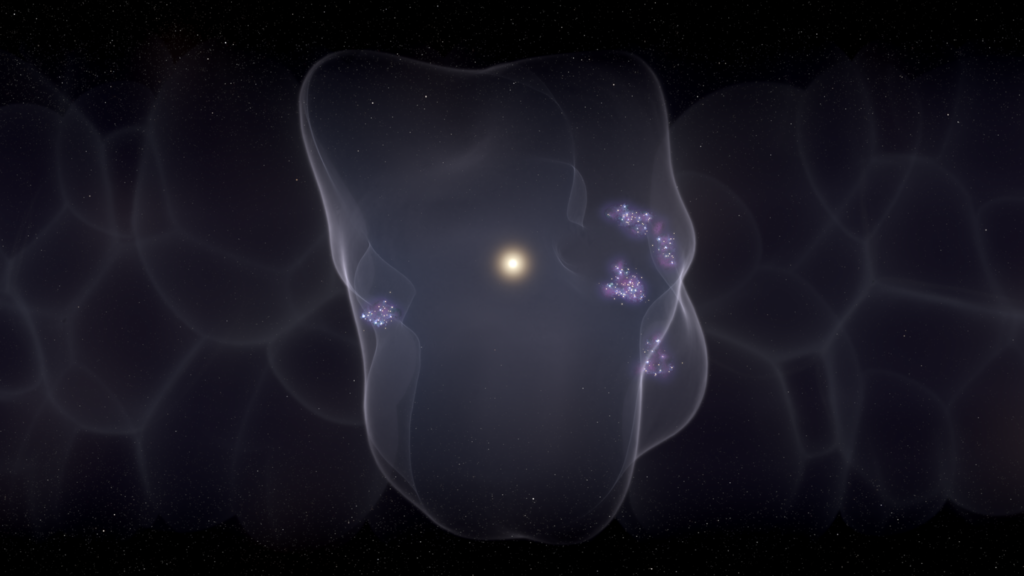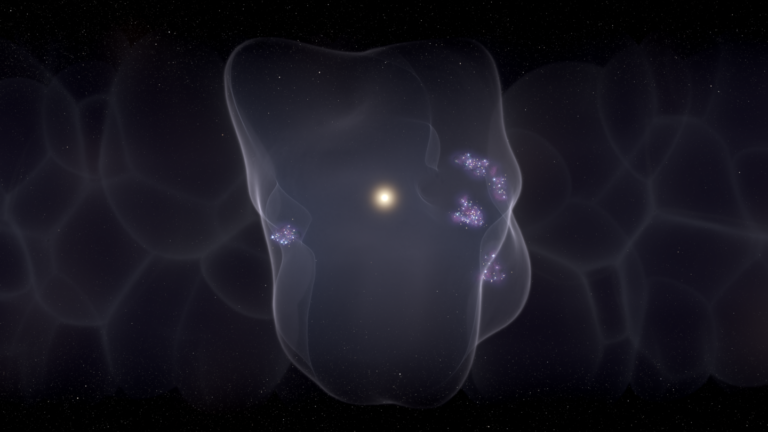Scientists have recently charted the protective ‘bubble’ surrounding our planet.
Many may sense a metaphorical bubble around them, but in reality, Earth is situated within one. Published today in Nature, scientists from the Center for Astrophysics and the Space Telescope Science Institute have crafted a 3D map that reconstructs the evolutionary timeline of the “Local Bubble,” a vast cavity spanning 1,000 light-years, consisting of cold gas and dust crucial for the creation of nearby young stars, including our sun.

This study unveils that Earth, along with all stars and star-forming regions within a 500-light-year radius, exists on the surface of this bubble. Catherine Zucker, an astronomer at the Space Telescope Science Institute and the lead author of the study, emphasizes the significance of gaining insights into how Earth found itself within the Local Bubble, potentially offering a crucial step in comprehending our galaxy.
Zucker states, “Essentially we have a front-row seat to all the star formation that’s happening on the surface all around us.” Although astronomers have been aware of the Local Bubble for decades, this discovery was accidental, originating from a quest to map the major landmarks in our galactic neighborhood.
Initially focusing on studying the Milky Way’s spiral arms, the team noticed stars converging near the bubble’s surface. Leveraging the software program Glue and data from the Gaia space observatory, the researchers established a map of star locations, revealing that the bubble formed from supernovae explosions approximately 14 million years ago. These explosions expelled interstellar gas, creating expanding shells that later fragmented and collapsed into nearby molecular clouds.
Zucker describes the Milky Way as a thin pancake, and supernovae create bubbles that puncture its surface, influencing its structure. The team asserts that the Local Bubble’s structure resembles a “galactic chimney” rather than a traditional bubble. Data from various sources, with Gaia being crucial, facilitated the creation of a 3D model of the Local Bubble in just three hours.
Understanding the history of star-forming regions aids astronomers in comprehending their evolution over time. This knowledge is pivotal in understanding the role dying stars play in creating new ones and its implications for the entire galaxy. Adam Frank, a professor of physics and astronomy at the University of Rochester, praises the Local Bubble as a “beautiful example” of triggered star formation, driven by supernova blasts.
While Earth entered the Local Bubble around 5 million years ago, Frank reflects on whether life on Earth was impacted by the proximity of exploding supernovae. He notes the potential of supernovae to sterilize their local environments, and while Earth’s early conditions endured, for some stars in the galaxy, death is a transformative process.
Frank emphasizes the essential role of the life cycle of stars, as it contributes to the recycling of heavy elements, such as silicon, iron, magnesium, and calcium, released by stars. These elements are vital for sustaining life on Earth. Frank concludes, “We wouldn’t be here. Life wouldn’t be possible without … silicon and iron, magnesium, calcium, and all these other elements, which are born inside stars.”
Do not forget to share your opinion with us to provide you with the best posts !





0 Comments